Reliance Water Heater Anode Rod Replacement
This is a step-by-step guide on Reliance Water Heater Anode Rod Replacement. In this article, I will walk you through 5 simple steps to replace the anode rod like a pro.
The best part is- the procedure I will break down here can be applied to either the gas or electric Reliance Water Heater. So, let’s get started right here.
Table of Contents
Reliance Water Heater Anode Rod Replacement [5 Simple Steps]
Anode rod is a sacrificial metal rod. Its key job is to reduce corrosion and premature failures in the tank.
You should inspect this component after the first six months of operation when you drain and flush the unit. If it gets depleted or worn out substantially, you must replace it.
To replace the anode rod, you should have the following pieces of equipment at your fingertips:
- A replacement anode rod
- Socket wrench
- 1 1/16” socket
- 24” cheater bar or pipe
- A flat blade screwdriver
- A garden hose
- Teflon Tape
Once you have these tools and supplies near at hand, go along with the following steps to make the replacement.
1. Turn The Power Off
To begin with, turn the power off to the unit at the circuit breaker.
On the other hand, if you own a gas operated Reliance Water heater, shut off the gas supply by turning the gas supply valve.
Don’t forget to close the shut-off valve at the cold water inlet line or the main water supply.
Nonetheless, open a hot water faucet to release pressure or depressurize the tank.
2. Drain Your Water Heater
Fasten a garden hose to the drain valve and place the other end of the hose to the nearest floor drain or outside.
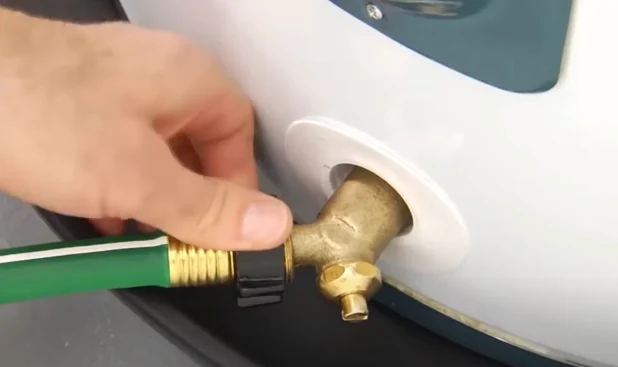
Turn on the drain valve and let the water drain. I recommend you drain approximately 2 to 5 gallons of water from the tank.
After draining water, remove the hose and close the drain valve.
3. Locate the Anode Rod & Remove It
Locate the anode rod, which you can find on the top of the tank. It will be underneath a black plastic cover marked ‘Anode Rod’. On older models, this component may be exposed.
Use a ‘key hole’ saw or similar tools like a flat blade screwdriver to remove the insulation covering the anode rod.
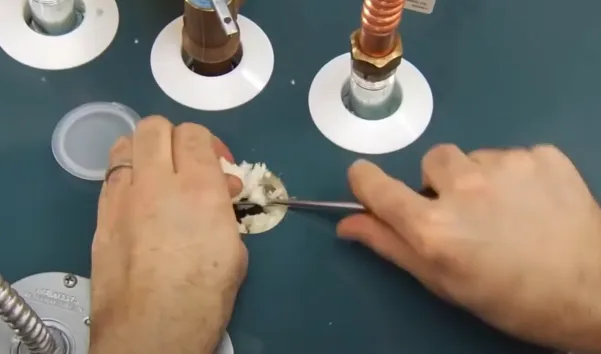
Once you remove the foam insulation, use a 1 1/16” socket wrench with an extension to remove the anode rod by turning it counterclockwise.
Keep a rag near your hand as there will be some seepage of water around the anode rod’s location.
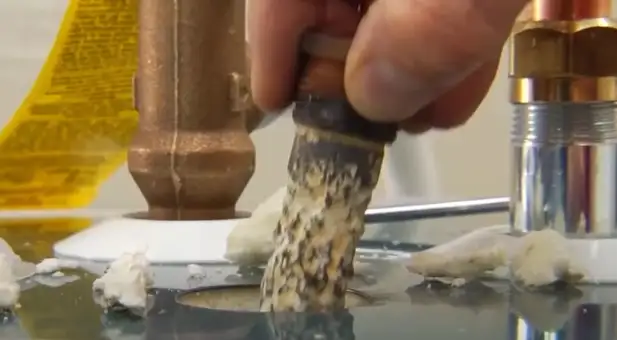
Then, lift the anode rod out of the tank but be careful because the metal may be hot.
4. Install The Replacement Anode Rod
Prepare the threads of the replacement anode rod before installing it.
Start winding the Teflon tape in the direction that pieces will be screwed together. Wrap six or more turns with the tape to make the anode rod ready for installation.
Once you prepare the anode rod, install it and tighten it up thoroughly.
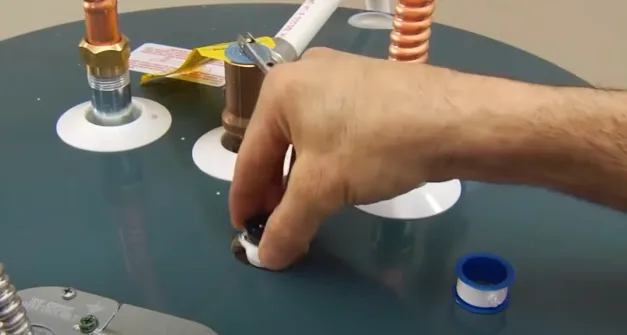
Tips: If needed, don’t forget to cut the replacement anode rod with a hacksaw to fit your tank.
5. Refill the Tank & Restore the Power
Finally, refill the tank once you install the anode rod successfully. Regarding this, open a hot water faucet somewhere in your house and turn on the cold water supply valve to let the tank refill.
Once the tank is full, restore the power. If it’s an electric unit, turn the power on at the circuit breaker. For a gas unit, turn on the gas supply at the gas supply valve.
FAQs
Where is the anode rod on a Reliance water heater?
On a Reliance Water Heater, the anode is positioned on the top of the tank. It’s covered with a plastic cover marked ‘Anode Rod’.
Is it worth replacing anode rod in water heater?
As I mentioned earlier, the anode rod is actually a sacrificial rod metal that helps reduce corrosion and premature failures like leaks in the tank. If it gets worn out or depleted, the anode rod fails to prevent the tank from corroding. As a result, it will damage the tank.
So, it’s 100% worth replacing the anode rod if it gets deteriorated. Otherwise, it will cost you an expensive replacement like you may replace the entire unit if the tank gets damaged.
Are water heater anode rods universal?
Yes, water heater anode rods are universal.
Which is better: magnesium or aluminum anode rod?
Aluminum anode rod is better than the magnesium anode rod. It’s better for the water that contains a higher pH level.
It withstands the hard water better than any other types of rod like magnesium. The aluminum rod is less reactive than magnesium rod and prevents the tank from corroding.
Most importantly, the aluminum anode rod will not cause rotten egg smell in water like the magnesium anode rod does.
Turns out, the aluminum rod lasts longer compared to the magnesium one. However, the aluminum rod will deplete faster than normal if you use a water softener.
In short, aluminum anode rod is better than the magnesium one because of the sense of ability to handle hot water, longevity, and the price.
Can I replace the anode rod myself?
Yes, you can replace the anode rod yourself by following the step-by-step instructions I mentioned above.
How often should you replace anode rod in a hot water heater?
You should replace the anode rod every 3-4 years in a hot water heater.
End-Note
You should cost at least $200 to replace an anode rod professionally while the part itself is only $20 or $40.
Fortunately, this guide on Reliance Water Heater Anode Rod Replacement will save you that additional cost. Just follow the step-by-step instructions and have the anode rod replaced successfully.
Good Luck!
Read Also:

Eric Alvarez is the head of content on LilDutchUncle.Com. He is an HVAC guy based in El Paso, Texas, United States. He obtained his Bachelor of Science degree from the University Of Texas at El Paso. Years of experience in the HVAC field have taught him many lessons, not the least of which is that the value of quality and knowledge far exceeds any promised initial savings. He has a good standing reputation for superior skills in heating, air conditioning, hot water tanks, and indoor air quality systems.

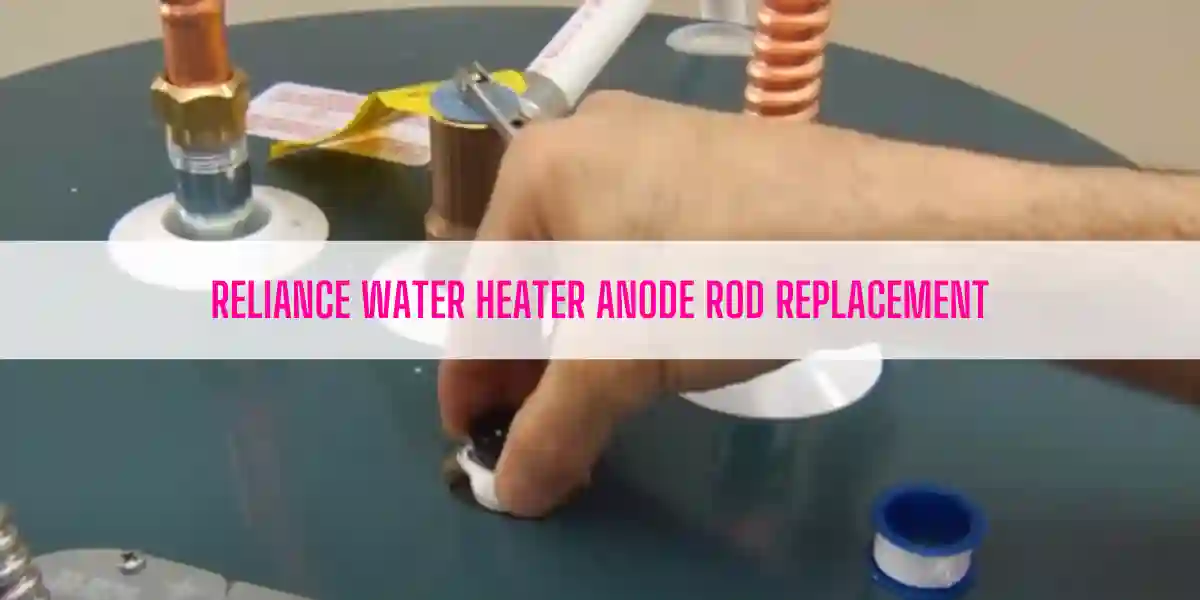
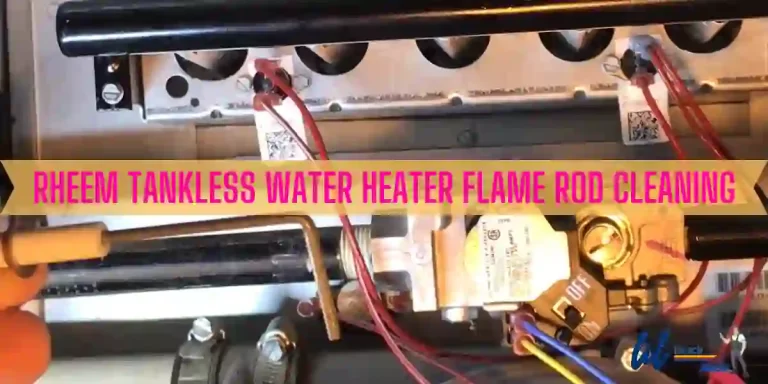
![Takagi Tankless Water Heater Filter Cleaning [9 Easy Steps]](https://lildutchuncle.com/wp-content/uploads/2022/10/Takagi-Tankless-Water-Heater-Filter-Cleaning-768x384.webp)
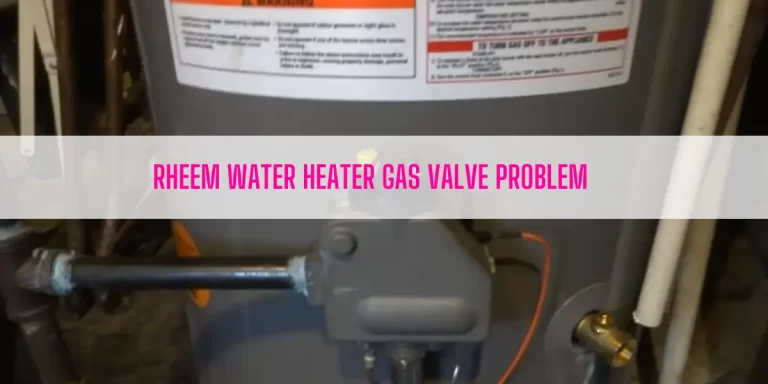

![Rheem Water Heater Reset Button [Complete Guide]](https://lildutchuncle.com/wp-content/uploads/2023/05/reset-button-on-rheem.png)
![Rinnai Tankless Water Heater Maintenance Manual [Complete Guide]](https://lildutchuncle.com/wp-content/uploads/2022/09/Rinnai-Tankless-Water-Heater-Maintenance-Manual-768x384.webp)
